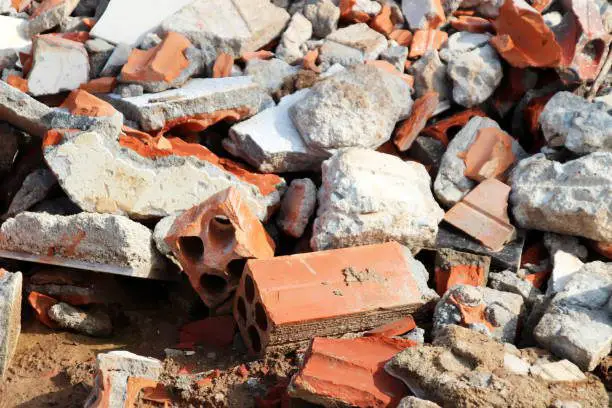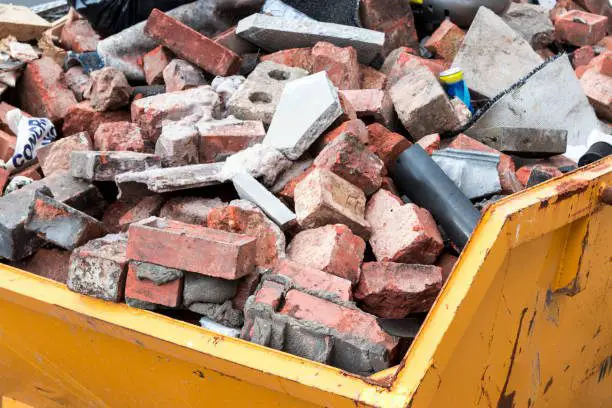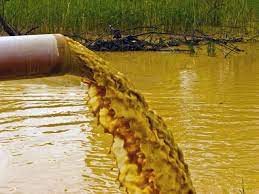Construction and Demolition (C&D) Wastes Complete Management Guide
Waste management for construction and demolition (C&D) projects is crucial for the construction sector. It entails the careful processing and removal of waste materials produced during the building, remodeling, or destruction of other structures.
The environment can be protected, human health may be preserved, and construction businesses can save money with proper C&D waste management. Reducing the quantity of trash produced during construction is one of the first tasks in C&D waste management.
This may be achieved by utilizing materials that are stronger and last longer, using sustainable construction techniques, and developing more energy-efficient building designs. Making the most of recycling opportunities for C&D trash is an additional crucial step.
This may be accomplished by separating various components, including concrete, metal, and wood, and recycling them. Recycling C&D trash not only reduces the quantity of the garbage that must be disposed of, but it also aids in resource conservation and lessens the negative environmental effects of the construction sector.
C&D trash should be disposed of safely and responsibly when recycling is not an option. The garbage may either be incinerated or sent to a landfill to do. While incineration should be carried out in a manner that limits the emission of pollutants into the air, landfills should be appropriately maintained to avoid contamination of the air, water, and soil.
It’s crucial to have a strategy in place for dealing with potentially dangerous materials produced throughout the building process. Lead paint, asbestos, and PCBs are examples of hazardous materials that need to be handled and disposed of carefully to protect both human health and the environment.
Overall, effective C&D waste management calls for a mix of waste reduction, material recycling, and trash disposal in a safe and responsible way. Construction businesses may contribute to environmental protection, preserve natural resources, and reduce waste disposal costs by adhering to these recommendations.
Managing construction and demolition waste is crucial for preserving natural resources, safeguarding the environment, and preserving human and animal health. It entails minimizing the trash produced during building, recycling as much of the garbage as is feasible, and properly disposing of any leftover waste.
By adhering to these recommendations, construction enterprises may reduce the damaging effects of the sector on the environment and public health while also saving money on waste disposal expenses. Construction and demolition (C&D) waste is a serious environmental problem because it often contains hazardous chemicals and may occupy precious landfill space. But with the right management, this waste stream may be reduced and even recycled for brand-new building projects.
Ways To Manage Construction and Demolition (C&D) Waste Properly

(1) Source Reduction
Waste from construction and demolition (C&D) projects contributes significantly to the country’s solid waste stream. Source reduction is one of the most important methods for lowering the volume of C&D trash that is disposed of in landfills.
Source reduction, commonly referred to as waste prevention, is taking actions to reduce the quantity of the trash that is first created. Utilizing more resilient materials, creating structures that are simpler to demolish and recycle, and putting recycling processes in place on construction sites are all ways to do this.
Utilizing recycled materials is one approach to cutting down on C&D waste. For instance, employing recycled steel or reused wood in buildings may reduce the requirement for new resources. The usage of recycled materials in construction may also be increased by including goods derived from them in project requirements.
Buildings that are easy to disassemble are a further method for reducing source emissions. This indicates that structures are made in a manner that makes it simple to disassemble them and reuse or recycle the resources. This might include eliminating adhesives and other materials that make it difficult to deconstruct a structure, as well as adopting standardized connections between building components.
Another strategy to reduce C&D waste on building sites is to implement recycling initiatives. This may include on-site material separation, such as sending concrete, wood, and metals to be recycled rather than to a landfill.
A specified proportion of C&D garbage must also be recycled or repurposed, according to landfill diversion regulations that have been put in place by several cities and states. Construction businesses may be strongly motivated to adopt source reduction and recycling initiatives by these rules.
This might include using efficient building techniques to reduce waste production and utilizing environmentally friendly building materials, such as recycled steel or reused wood. Source reduction is an essential tactic for lowering the volume of C&D trash that is disposed of in landfills.
It is feasible to lessen the environmental effect of the construction industry by employing recycled materials, planning structures for disassembly, putting recycling systems in place on construction sites, and supporting laws that favor recycling and reuse.
Read Also: Composite Wastes Complete Management Guide
(2) Recyclability
Concrete, asphalt, wood, and other materials may all be recycled on-site or at a recycling center. Recycling these items conserves natural resources, cuts down on the demand for new materials, and lessens the quantity of the garbage that is dumped in landfills.
Recycling C&D garbage, however, may significantly reduce the volume of waste disposed of in landfills, preserve natural resources, and lessen pollution. Utilizing recycling facilities is one technique to recycle C&D trash. These facilities separate recyclable items like metal, concrete, and wood as they sort and treat the garbage.
The requirement for virgin resources might be decreased by using recycled materials in new building projects. Utilizing on-site recycling tools is another approach to recycling C&D trash. The requirement for transportation to a recycling center may be eliminated by using this equipment, like crushers and screens, to process the trash on the construction or demolition site.
Reducing the quantity of C&D trash produced in the first place may have a substantial effect in addition to recycling. This may be done by using sustainable construction techniques, such as utilizing recycled materials, planning for disassembly, and including green roof systems.
Recycling C&D trash is a crucial step in lowering pollution and protecting the environment. It is feasible to considerably reduce the quantity of C&D trash transported to landfills by using recycling facilities, on-site recycling technology, and sustainable construction techniques.
(3) Reuse
This may include preserving useable components from a demolition project, such as bricks and windows, and integrating them into a new building project. This saves money on new materials and lessens the quantity of the garbage that is dumped in landfills.
The trash from construction and demolition (C&D) contributes significantly to global waste production. To lessen the negative effects of building projects on the environment, this trash may be repurposed in a number of ways.
Recycling C&D waste is one method of reuse. Concrete, asphalt, and wood are among the materials that may be crushed and utilized as a foundation for new building projects. This decreases the need to mine fresh raw materials and lowers the quantity of the garbage that is dumped in landfills.
Utilizing green walls and rooftops is another approach to recycling C&D waste. These systems, which may be created from C&D waste materials like crushed concrete and brick, employ plant life to cover a building’s walls or roof. Green roofs and walls enhance a building’s beauty while simultaneously lowering stormwater runoff and enhancing air quality.
Waste from C&D may potentially be utilized to make alternative fuels. For instance, it is possible to make biofuels from wood waste and asphalt cement from asphalt shingles. This decreases the quantity of the garbage that is dumped in landfills as well as the requirement for fossil fuels.
Read Also: Chemical Wastes Complete Management Guide
Regulations are in place to promote the recycling and reuse of C&D waste in addition to these methods of reuse. For instance, rules in several US states mandate that a particular proportion of C&D trash be recycled or repurposed. This makes it feasible to utilize C&D waste in the most effective and ecologically responsible manner possible.
Recycling construction and demolition debris is an essential step in lowering the environmental effect of building operations. It not only aids in the preservation of natural resources and the demand for fossil fuels but also lessens the quantity of the garbage that is dumped in landfills.
It is crucial for construction businesses to incorporate recycling and reuse techniques to lessen the environmental effect of their projects in light of rising awareness and legislation. Hazardous materials, such as asbestos and lead-based paint, must be properly disposed of in order to practice effective C&D waste management.
Federal and state requirements require that these materials only be handled and disposed of by qualified specialists. Municipalities and construction firms may also put C&D waste management plans into practice in addition to these particular management techniques.
These plans may contain monitoring and reporting demands in addition to recommendations for waste minimization, recycling, and disposal. Resource conservation and environmental protection depend on the correct management of C&D waste.
The quantity of C&D trash delivered to landfills may be greatly decreased by adopting source reduction, recycling, and reuse initiatives, as well as safely disposing of hazardous items and putting management plans into place.
Read Also: The Complex World of Health Insurance: Benefits of Health Insurance



